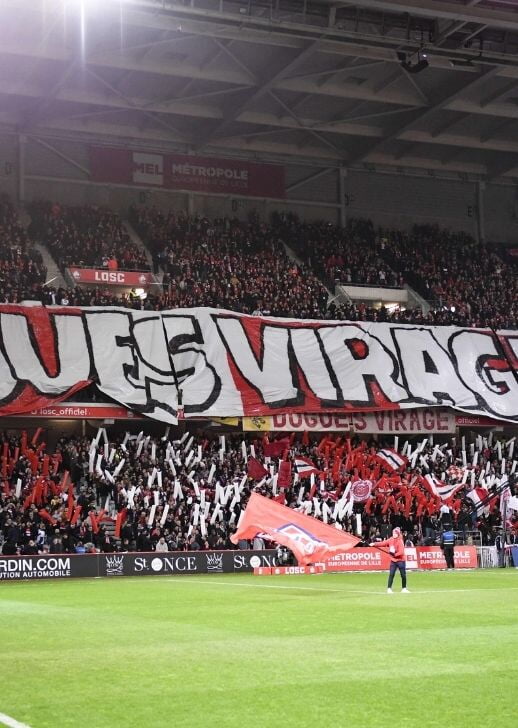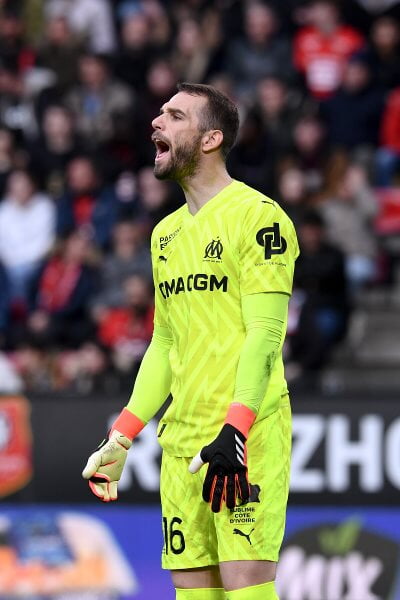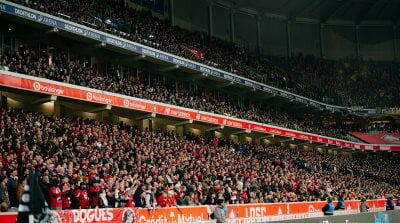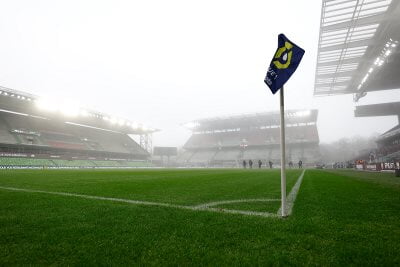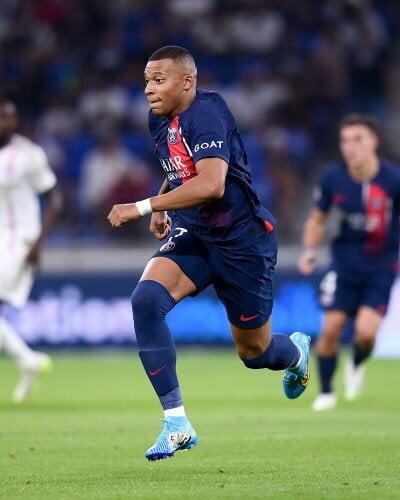LOSC Lille have enjoyed a fine start to the season that marks a decade since their double-winning 2010-11 campaign. The three-time champions have been a consistent presence towards the top of Ligue 1 for two decades but have a long, rich and proud history. Ligue 1 tells you all you need to know about Les Dogues…
HISTORY
The far north of France was a hotbed for football in the early 20th century. In the years before World War One, RC Roubaix were French champions five times, US Tourcoing and Olympique Lillois once each. All hailed from the Lille area. Olympique Lillois were also the first champions of a professional league in France in 1933 and reached the Coupe de France final in 1939.
Fast forward to September 1944, and in the weeks after the liberation of France during World War Two, the modern LOSC was formed - Lille Olympique Sporting Club, or LOSC, was the result of a coming together of Olympique Lillois and Sporting Club Fivois, a team from the Fives neighbourhood of Lille who had been Cup finalists in 1941.
Post-war glory years
Given the success of their forefathers, that LOSC should go on to great things was no enormous surprise, yet the scale of their early achievements was still remarkable. The post-war era is most closely associated now with Stade de Reims, who won six titles between 1949 and 1962 and got to two European Cup finals. OGC Nice won four league titles in the same period, but this was also Lille’s golden era.
The new club got to the Coupe de France final in their first year, losing 3-0 to RC Paris in Colombes. It was the prelude to a stunning 1945-46 campaign, as the first season after the end of the war saw Lille win a league and cup double. The future French international striker René Bihel was the league’s top scorer with 28 goals as Lille finished a point clear of AS Saint-Etienne, and they defeated Red Star 4-2 in the Cup final in front of almost 60,000 fans.
The coach of that double-winning campaign was an Englishman, former Brentford player George Berry, who had previously played for and managed SC Fives. He made way the following season to André Cheuva, a former France international. Cheuva could not repeat the double-winning heroics but Lille did retain the Coupe de France in 1947 with a 2-0 win over Strasbourg in the final, and then defeated local rivals RC Lens 3-2 in the 1948 edition to lift the Cup for the third year running. The prolific Jean Baratte scored their late winner in that final.
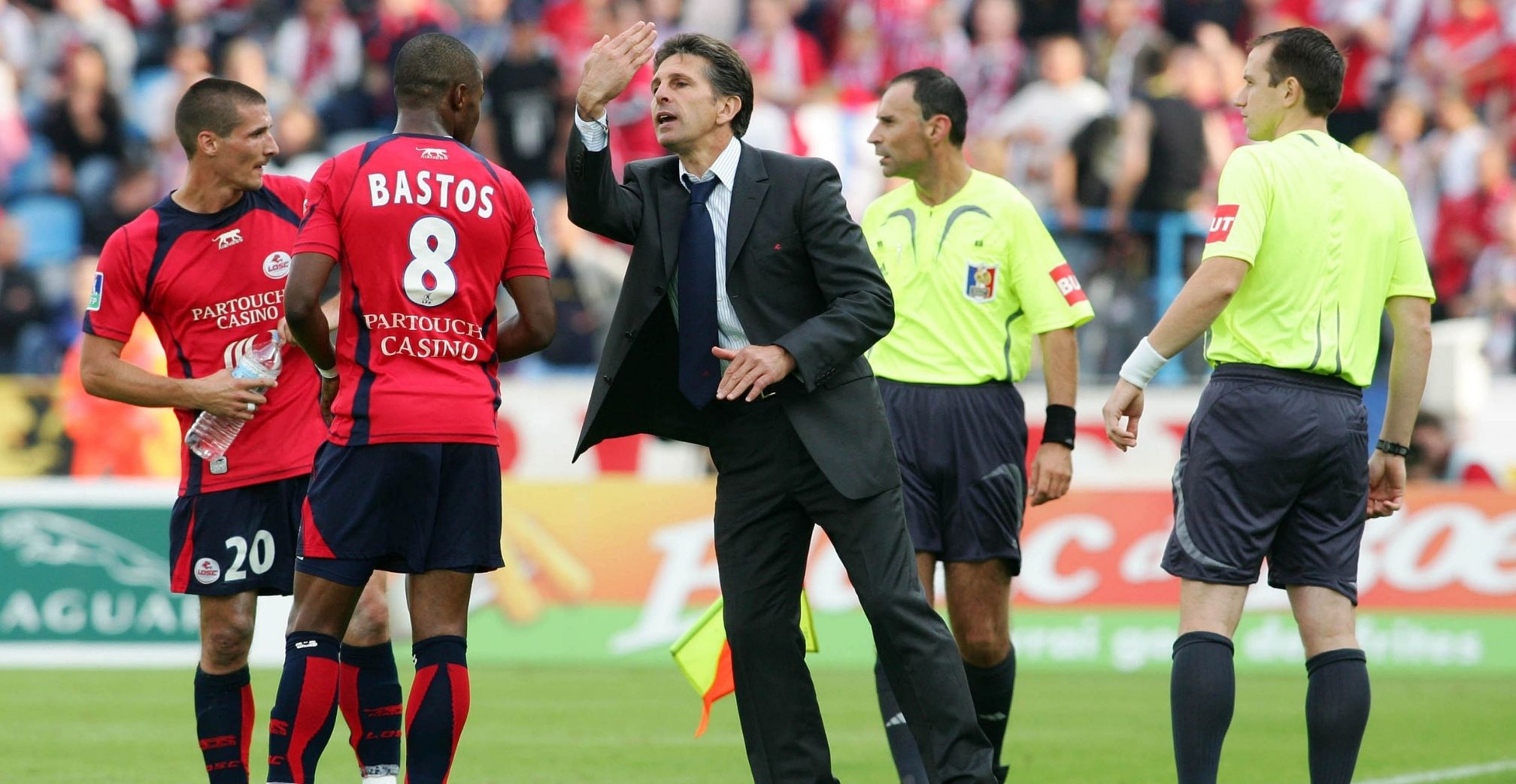
Lille lost the 1949 Coupe de France final to RC Paris and continued to finish in the upper reaches in the league. They featured in the Latin Cup, a forerunner to the European Cup, going down to AC Milan in the 1951 final. There was a fourth Coupe de France in 1953, when they saw off Nancy 2-1 in the final, and a second league title in 1954 as the northerners just pipped both the reigning champions Reims and Girondins de Bordeaux, conceding a miserly 22 goals in 34 games. Then in 1955 there was yet another Coupe de France victory, as Bordeaux were seen off in the final.
Hard times
Lille had won two league titles and five Coupes de France in a decade, one of the great enduring periods of success in the history of the French game. But they soon fell on hard times. They were relegated in 1956, leading to the departure of the great Jean Vincent. He went on to star for Reims and later enjoyed great success as coach of FC Nantes. Without him Lille came straight back up but then went down again in 1959.
The 1960s was an unstable period for Lille as they endured financial difficulties and ended up dropping out of the professional ranks altogether in 1969. They did fight back and spent a year in the top flight in 1971-72, and then three seasons in the elite from 1974 to 1977. Lille returned to the top tier as second-division champions in 1978 and finally went on to establish themselves as a force to be reckoned with again. Apart from three seasons between 1997 and 2000, Les Dogues have been permanent fixtures in the elite for four decades now.
Not that success came easily in the final two decades of the 20th century. A sixth-place finish in 1991 - with Jacques Santini as coach - was as good as it got in that time and matched their best performance since their last league title in 1954. Yet after a further slump led to them slipping out of the top flight again in 1997, the appointment as coach of Nantes legend Vahid Halilhodzic turned things around and finally pointed the club towards a successful new era.
European discovery and arrival of Puel
Halilhodzic was appointed in 1998, led LOSC to the second-tier title in 2000, and then took them to third place in the first division in 2001. Now they were in Europe for the first time, at last, and Lille beat Parma in a qualifier to make the Champions League group stage. They played their home games in Lens, where they held Deportivo La Coruña and Manchester United and beat Olympiakos. After coming third in their group, they dropped into the UEFA Cup where they were eventually edged out by Borussia Dortmund in the last 16.
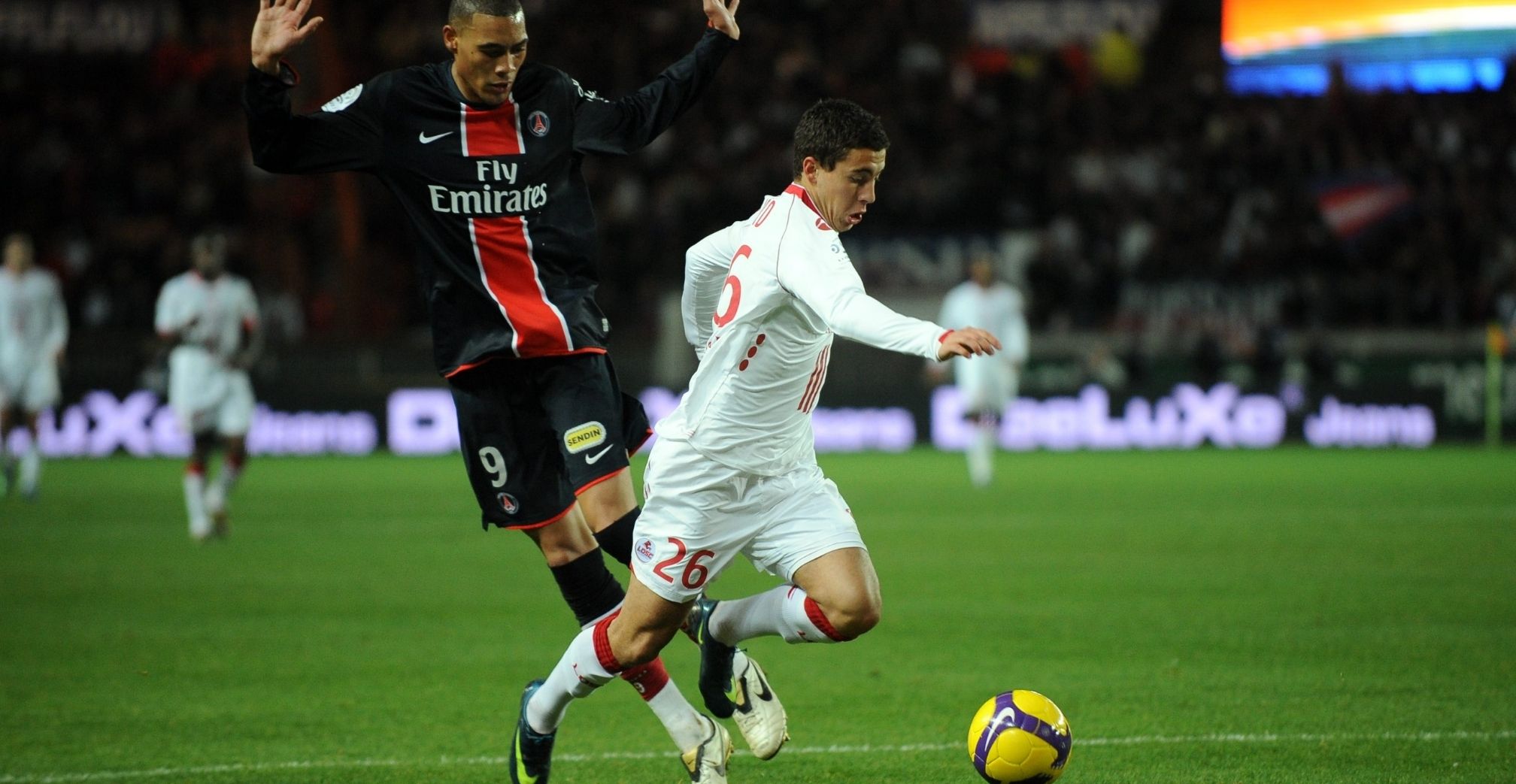
Claude Puel took over as coach in 2002 and went on to spend six years at the helm, in which Lille became European regulars despite leaving their home at the Stade Grimonprez-Jooris and being exiled to the Stadium Lille Métropole, an out-of-town athletics venue. They finished second in Ligue 1 in 2005 to earn another crack at the Champions League in which they famously beat Manchester United 1-0 in a home game this time played at the Stade de France.
Back in the Champions League the following season, this time they made it out of their group, famously beating AC Milan at San Siro en route to the last 16 where they once again faced Manchester United, losing 2-0 on aggregate.
Hazard’s emergence and double delight
Puel left for Olympique Lyonnais in 2008 without having delivered any silverware but having laid the groundwork for future glory under his successor, Rudi Garcia, a former Lille player. Indeed Puel notably gave a debut to a certain Eden Hazard, and the Belgian youngster was the star player in a brilliant team under Garcia that, somewhat improbably, won a Ligue 1 and Coupe de France double in 2010-11, delivering the club’s first major silverware in 56 years.
Garcia’s side were top at the winter break and then lost just two games in the second half of the campaign. In a remarkable eight days in May Lille first of all won the Coupe de France final as a late Ludovic Obraniak free-kick sailed over goalkeeper Grégory Coupet to give them a 1-0 victory against holders PSG. Then, the next weekend, they drew with PSG in Paris to become champions for the first time since 1954. They finished with 76 points, eight points clear of outgoing champions Olympique de Marseille. Hazard, just 19 at the start of that campaign, was named France’s player of the year.
Living up to that success was never going to be easy. The club moved into a wonderful new home, the Stade Pierre-Mauroy, in 2012, but the title-winning side was broken up, with Hazard notably leaving for Chelsea. Still, LOSC followed up winning the league by coming third. René Girard took the team to another third-place finish in 2014 while there was a run to the Coupe de la Ligue final in 2016.
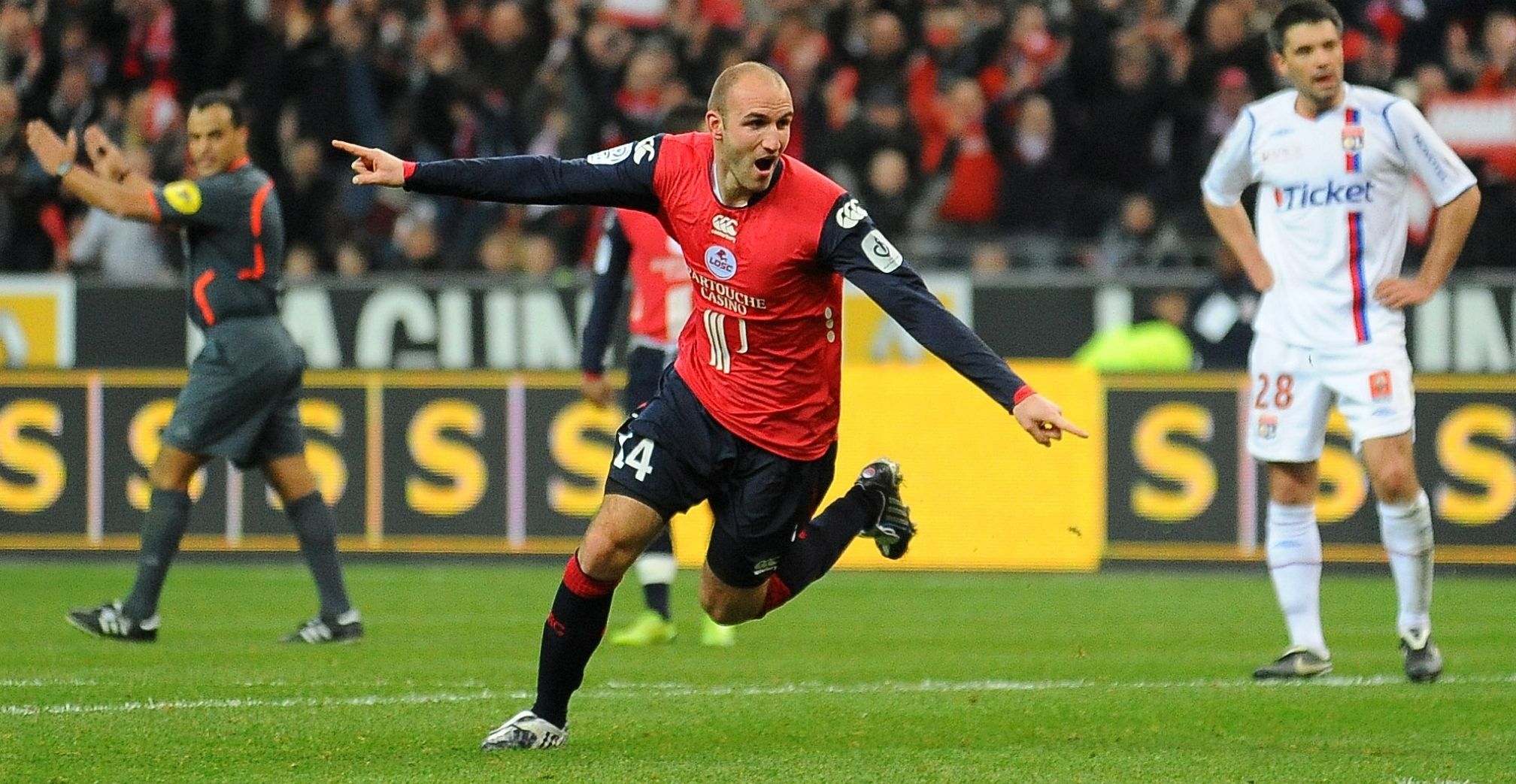
In early 2017 long-serving president Michel Seydoux - the film producer and great uncle of renowned actress Léa Seydoux - agreed a deal to sell the club to the Luxembourg-born businessman Gérard Lopez. He appointed Marcelo Bielsa as coach but the enigmatic Argentine lasted less than half the 2017-18 season and it took the arrival of Christophe Galtier on the bench to turn things around again. Galtier steered the team to safety, then led a brilliant team to second place in 2018-19. The club has focused on a policy of bringing in young players with great potential with the aim of selling them on at a profit, like Nicolas Pépé and Victor Osimhen. Meanwhile, they continue to enjoy success on the pitch.
CLUB COLOURS
Lille take their colours from the two teams who came together to form LOSC in 1944. Olympique Lillois wore white and red, while SC Fives wore blue with white detail in the shape of a diamond on their shirts. So today LOSC wear a red shirt with a dark blue diamond-style flash on the chest, and dark blue shorts.
NICKNAME
Lille are known fondly as Les Dogues (The Mastiffs). There is a statue of this large breed of dog at the entrance to the club’s training ground, the Domaine de Luchin, which was inaugurated in 2007 and sits just outside the village of Camphin-en-Pévèle, just a few kilometres from the Belgian border.
According to Patrick Robert, the president of the LOSC-Lille Métropole association, the origin of the nickname dates back to the 1930s, before the modern club was founded. “After a match against Paris won by Olympique Lillois at the Parc des Princes, a Parisian journalist compared the players to mastiffs because they never gave up,” he told local newspaper La Voix du Nord in 2014. The mastiff also takes pride of place on the club’s badge.
CLUB ICONS
Jean Baratte
Baratte is the club’s all-time record goal-scorer in the top flight with 167 goals, putting him high up on the league’s overall list. A star of the great LOSC side of the early post-war era, he won two league titles and the Coupe de France four times. Born just outside the city, Baratte was the top flight’s top scorer in 1948 and again in 1949. He scored a late winner in the 1948 Coupe de France final against Lens, and was captain when they beat Nancy in the 1953 final. Baratte left Lille after that victory and had spells at AS Aix and then Roubaix-Tourcoing, before returning for a final spell with LOSC in the second tier in 1956-57. He won 32 caps for France, scoring 19 goals. Baratte died in 1986 at the age of 63.
Marceau Somerlinck
Another legend of Lille’s post-war glory days, midfielder Somerlinck played for SC Fives before starring for LOSC from 1945 to 1957. He featured in two title-winning seasons and won five Coupes de France, in 1946, 1947, 1948, 1953 and 1955. Somerlinck holds the record for the most appearances in a Lille shirt. He also remains the most successful player in French Cup history, although he has since been matched by Dominique Bathenay, Alain Roche and Thiago Silva, who won his fifth Cup medal with Paris Saint-Germain earlier this year.
Bernard Lama
Goalkeeper Lama won 44 caps for France, featuring at Euro 96 and in their triumphant Euro 2000 campaign. He was also the back-up to Fabien Barthez in goal during Les Bleus’ glorious 1998 World Cup campaign on home soil. By then he was starring for Paris Saint-Germain, where he won a handful of major honours including a league title and the UEFA Cup Winners’ Cup. But his career began at Lille, with whom he made more than 100 appearances during the 1980s, and even scored a penalty in a win over Laval in May 1989. He left the club for FC Metz shortly after that. “It is true that I didn’t have my best days as a player at LOSC, but it is there that I got my foot on the ladder and I can’t forget that,” Lama later recalled in an interview with the club’s official magazine in 2010.
Eden Hazard
The Belgian joined the Lille academy as a fresh-faced teenager and went on to make his professional debut under Claude Puel as a 16-year-old in 2007. The winger quickly became a regular in an exciting team that was developing under Rudi Garcia, and was named France’s young player of the year in 2009 and in 2010. Hazard went on to be the standout in the side that won the Ligue 1 and Coupe de France double in 2010-11, despite being just 19 at the start of that campaign. He was France’s player of the year that season, and again the next year, before being sold to Chelsea in 2012 for €40 million. Hazard was just 21 at the time, but he had already secured his place in the pantheon of Lille greats.

STADIUM: Stade Pierre-Mauroy
Lille moved into their current home, the brand-new Stade Pierre-Mauroy, in August 2012. Situated in Villeneuve-d’Ascq, on the eastern outskirts of Lille, the all-seater stadium holds 50,083 fans and features a retractable roof. It takes the name of Pierre Mauroy, who was French Prime Minister under President François Mitterrand between 1981 and 1984 and was mayor of Lille for the best part of three decades.
The stadium hosted games at Euro 2016, including Wales’s quarter-final win over Belgium, and staged the 2019 Coupe de la Ligue final, when RC Strasbourg Alsace beat EA Guingamp on penalties. It has hosted rugby union internationals, the basketball world championship, and the Davis Cup final in tennis.
LOSC have moved around. They started out using two grounds, the Stade Jules-Lemaire and the Stade Henri-Jooris, the respective homes of SC Fives and Olympique Lillois, the two clubs that came together to make LOSC in 1944. The latter ended up being their only stadium after 1949, but in 1975 the club moved to a new ground, the 25,000-capacity Stade Grimonprez-Jooris, situated next to the Citadel of Lille.
However, Lille moved to the Stadium Lille-Métropole, an athletics ground on the outskirts of town in 2004 awaiting refurbishment work on the Stade Grimonprez-Jooris which ultimately never took place, and eventually they were rehoused at a venue to match their ambitions at the Stade Pierre-Mauroy.
DID YOU KNOW?
In their years at the Stadium Lille-Métropole, Lille often moved their biggest matches elsewhere. So it was that big Champions League matches were played at the Stade Bollaert in nearby Lens or at the Stade de France. And it was at the Stade de France that Lille played a “home” Ligue 1 match against Olympique Lyonnais in March 2009. They won 2-0 before a crowd of more than 78,000, a record top-flight attendance. Pictured above is Robert Vittek celebrating scoring one of Lille's goals that night.

